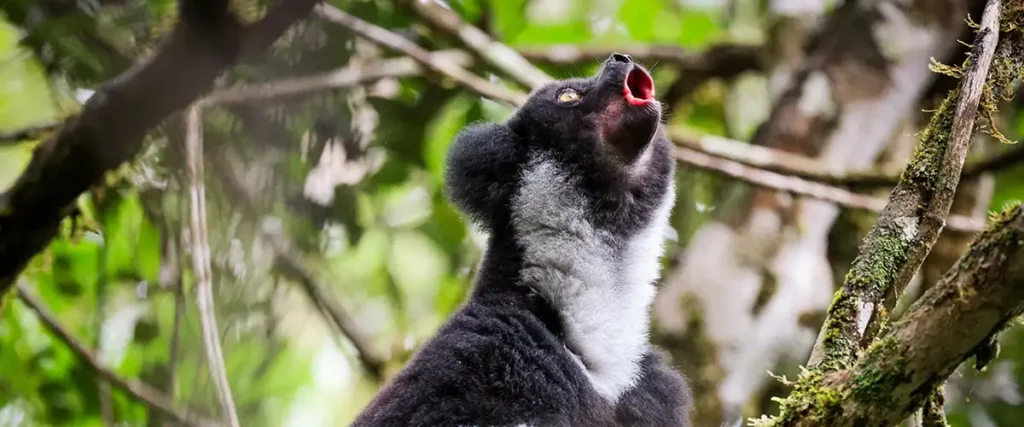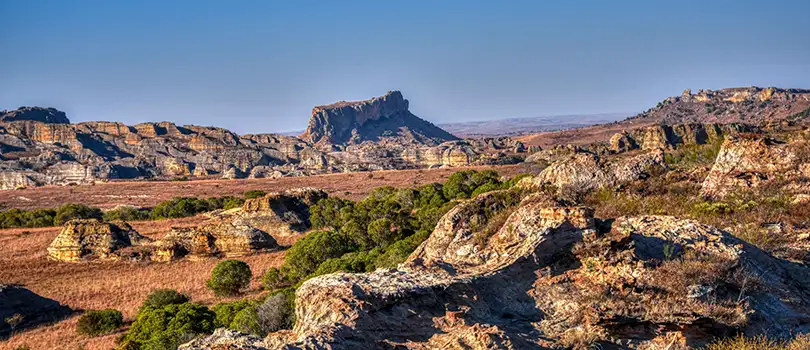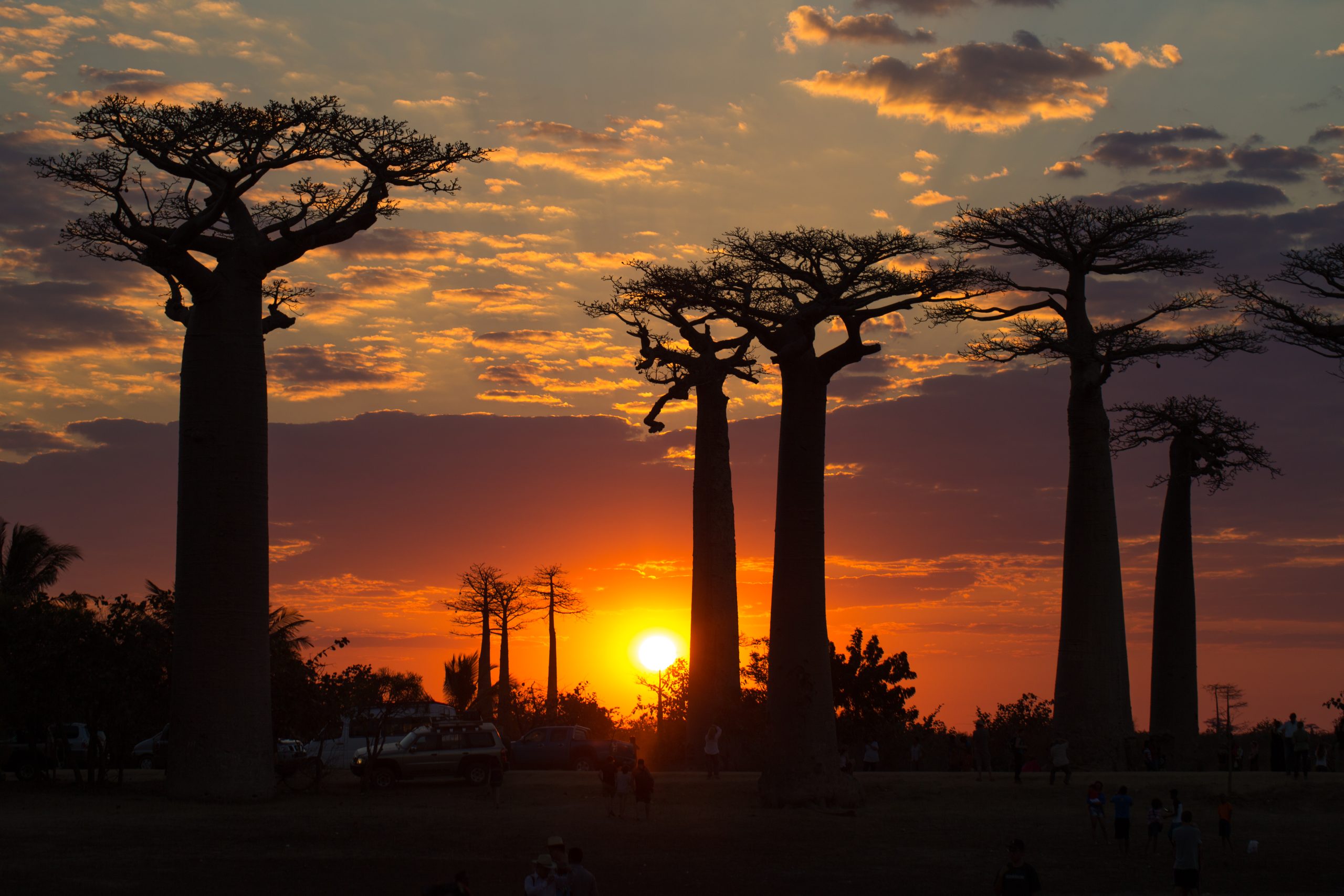Madagascar, often referred to as the “eighth continent,” is a biodiversity hotspot teeming with unique ecosystems and wildlife found nowhere else on Earth. Over 80% of the flora and fauna on this Eastern African island are endemic, making it a dream destination for nature enthusiasts and adventure travelers. Madagascar’s national parks and reserves—covering more than 9% of its land—are the cornerstones of its conservation efforts. These protected areas invite visitors to explore a world of lemurs, towering baobabs, pristine rainforests, and surreal geological formations.
Let’s dive into Madagascar’s must-visit national parks and discover why they belong on every traveler’s itinerary.

1. Andasibe-Mantadia National Park: A Lemur Lover’s Paradise
Located in Eastern Madagascar (check out our East Coast tour idea), Andasibe-Mantadia National Park is a haven for wildlife enthusiasts. This park, divided into the accessible Andasibe section and the more rugged Mantadia, is the best place to encounter lemurs in their natural habitat.
The Indri (above), Madagascar’s largest lemur, is the park’s superstar, known for its hauntingly beautiful calls that echo through the forest. Alongside the Indri, visitors can spot species like the diademed sifaka and brown lemurs. Well-marked trails in Andasibe offer beginner-friendly hikes, while Mantadia challenges seasoned trekkers with denser trails and wilder terrain.
Travel Tip: Consider staying in one of the eco-lodges near the park to enjoy guided nocturnal walks, where you can see chameleons, frogs, and other creatures come alive at night.
2. Isalo National Park: The Grand Canyon of Madagascar
In the southwest, Isalo National Park stuns visitors with its breathtaking sandstone formations, deep gorges, and crystal-clear pools. Its dramatic landscapes, often likened to the Grand Canyon, are ideal for both adventure and relaxation.
Hiking trails lead through narrow canyons to hidden waterfalls, natural swimming holes, and shaded oases. The contrast between arid rock formations and lush wetland plants at the park’s entrance creates a uniquely diverse experience.
Travel Tip: Visit during the cooler months of May to September for more comfortable hikes. Don’t forget to bring sturdy shoes, sunscreen, and plenty of water.

Discover Madagascar with Dadamanga
3. Ranomafana National Park: A UNESCO World Heritage Site

Nestled in southeastern Madagascar, Ranomafana National Park is a rainforest treasure. It’s famous for its golden bamboo lemur, discovered in 1986, and over a dozen other lemur species. Birdwatchers and herpetologists will also find plenty to marvel at, including vibrant chameleons, rare frogs, and endemic bird species.
The park’s hot springs and well-maintained trails make it a balanced destination for adventure and relaxation. After a day of exploring, many travelers unwind in the park’s therapeutic waters.
Travel Tip: Hire a knowledgeable local guide to help you spot elusive wildlife and learn about the region’s rich biodiversity.
4. Masoala National Park: Where Rainforest Meets Reef
Occupying much of the Masoala Peninsula in the northeast, Masoala National Park is Madagascar’s largest and most biodiverse park. It’s a paradise for both land and sea explorers, offering lush rainforests and vibrant marine ecosystems.
Visitors can trek through the park to find the striking red-ruffed lemur or snorkel along its coral reefs teeming with marine life, including sea turtles and colorful fish. A short boat ride away, Nosy Mangabe Reserve provides the chance to see rare nocturnal lemurs and Madagascar’s most elusive reptiles.
Travel Tip: Visit between September and December for the best weather and whale-watching opportunities along the coast.

5. Ankarafantsika National Park: A Birdwatcher’s Delight
In the northwest, Ankarafantsika National Park is celebrated for its dry deciduous forests and dramatic landscapes. It’s a lesser-known gem, home to endangered lemurs like the Coquerel’s sifaka and an array of endemic birds.
The park’s canyons and striking rock formations make it a scenic destination for hiking and photography. Visitors often pair a trip here with cultural tours of nearby villages, offering insight into the Malagasy way of life.
Travel Tip: Birdwatchers should pack binoculars to spot rare species such as the Madagascar fish eagle and Van Dam’s vanga.
6. Tsingy de Bemaraha National Park: A Geological Marvel

Designated as a UNESCO World Heritage Site, Tsingy de Bemaraha National Park in western Madagascar is unlike anything else on the planet. Its razor-sharp limestone formations, known as “tsingy,” form a surreal labyrinth that adventurous visitors can explore.
Bridges and trails lead to awe-inspiring views and encounters with wildlife, including the vocal Decken’s sifaka lemurs and the Malagasy giant rat. While some paths require a head for heights, there are also accessible routes for those who prefer to stay closer to the ground.
Travel Tip: A guided tour is essential to navigate the complex network of trails safely.
7. Amber Mountain National Park: Cool Highlands Escape
In northern Madagascar, Amber Mountain National Park offers a refreshing retreat with its montane rainforest, waterfalls, and crater lakes. The park is a biodiversity hotspot, home to chameleons, geckos, frogs, and plants found nowhere else.
Hiking through the park’s moss-covered trails feels like stepping into a fairy tale. Visitors are often enchanted by the Brookesia minima, one of the world’s smallest chameleons, and the park’s serene waterfalls cascading through lush greenery.
Travel Tip: Bring layers, as the cooler, wetter climate can make mornings and evenings chilly.
8. Baobab Avenue and Kirindy Forest: Not quite national parks
While not a national park, the Avenue of the Baobabs is one of Madagascar’s most photographed locations. Towering baobabs rise against the horizon, creating a scene that feels almost otherworldly. Nearby Kirindy Forest offers a different kind of magic, with rare nocturnal wildlife like the fossa and giant jumping rats.
Travel Tip: Visit Baobab Avenue at sunrise or sunset for the most striking photographs, and plan a night walk in Kirindy to see its rare nocturnal creatures.

Discover the Legends of Madagascar…
Why Madagascar’s National Parks Are Unmissable
Madagascar’s national parks are more than just places to see wildlife—they are windows into a world of unparalleled biodiversity. From the haunting calls of the Indri in Andasibe to the razor-sharp tsingy of Bemaraha, these parks showcase ecosystems that exist nowhere else on Earth.
For a seamless experience, consider working with a trusted tour agency like Dadamanga, renowned for its expert itinerary planning, knowledgeable drivers, and commitment to sustainable tourism. Whether you’re trekking through Isalo’s canyons or snorkeling in Masoala’s reefs, Madagascar promises a once-in-a-lifetime adventure for every kind of traveler.


